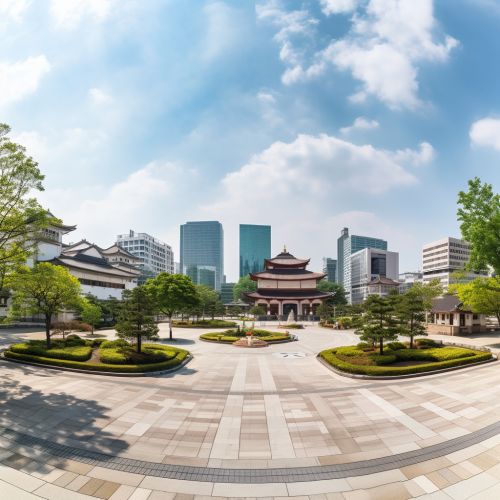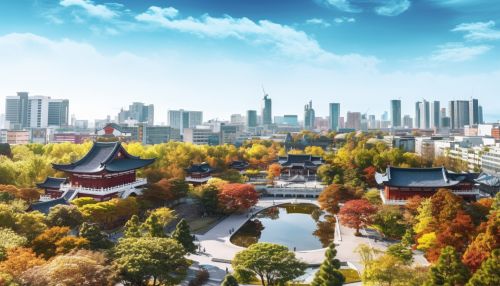Nagoya University
Overview
Nagoya University (名古屋大学, Nagoya Daigaku), often abbreviated as NU, is a prestigious higher education institution located in Chikusa-ku, Nagoya, Japan. Established in 1871 as a temporary hospital and medical school, it was later reorganized in 1939 as Nagoya Imperial University, one of the Imperial Universities of Japan. It was finally renamed Nagoya University in 1947, following the end of World War II.


History
Nagoya University's roots can be traced back to the founding of a temporary hospital and medical school in Nagoya in 1871. This was during the Meiji era, a period of rapid modernization and westernization in Japan. The institution was later reorganized as Nagoya Imperial University in 1939, becoming the last Imperial University of Japan.
The university played a significant role during the World War II, with many of its faculties and students involved in war efforts. After the war, the university was renamed Nagoya University in 1947 and began to expand rapidly. It became a national university corporation under the new educational system in 2004.
Campuses
Nagoya University has two main campuses: the Higashiyama Campus and the Tsurumai Campus. The Higashiyama Campus, located in Chikusa-ku, is the main campus and houses most of the university's faculties, research institutes, and administrative buildings. The Tsurumai Campus, located in Showa-ku, primarily houses the university's medical school and associated hospital.
Academics
Nagoya University offers a wide range of undergraduate and graduate programs across various disciplines. The university is divided into nine undergraduate schools, five graduate schools, and three research institutes. The undergraduate schools include the School of Letters, School of Education, School of Law, School of Economics, School of Science, School of Medicine, School of Engineering, School of Agricultural Sciences, and School of Informatics and Mathematical Science.
The university is renowned for its research output and has been associated with six Nobel laureates in Physics, Chemistry, and Physiology or Medicine. It is also a member of the Russell Group, an association of leading research-intensive universities in the UK.
Research
Nagoya University is known for its strong emphasis on research. The university has three research institutes: the Institute of Materials and Systems for Sustainability, the Institute of Innovation for Future Society, and the Institute for Advanced Research. These institutes conduct cutting-edge research in various fields, including materials science, sustainable development, social innovation, and advanced research methodologies.
The university's research output is highly regarded internationally, and it has been associated with several significant scientific discoveries. Notably, the discovery of the element Nihonium was made by a research team at Nagoya University.
Student Life
Nagoya University has a vibrant student life, with numerous student organizations, clubs, and societies. The university also offers a variety of services and facilities to its students, including libraries, sports facilities, dormitories, and a health and wellness center.
The university's international student community is particularly active, with many events and activities organized throughout the year to promote cultural exchange and understanding.
Notable Alumni
Nagoya University has produced many notable alumni, including six Nobel laureates. Some of the most distinguished alumni include Shoichi Sakata, a physicist known for the Sakata model, and Ryoma Noyori, a chemist who won the Nobel Prize in Chemistry.
